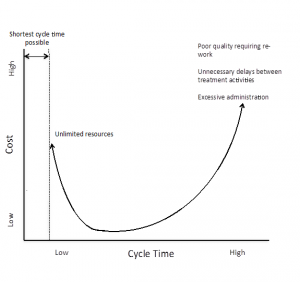BMJ Quality Improvement Reports: This is just the beginning…

Mareeni Raymond, GP and Clinical Advisor for BMJ Quality
It has been six months since BMJ Quality officially launched, and already we have published some amazing work at BMJ Quality Improvement Reports. Managing Editor, Mareeni Raymond, describes some of the highlights.
We started off by launching the junior doctor’s programme and have been hugely impressed with the projects that these doctors have organised and implemented. Since then, we have published work in specialties as varied as palliative care, orthopaedics, surgery, education, medicine, A&E, and more.
There are so many occasions in hospital where things can go wrong because guidance isn’t readily available or knowledge is lacking, and junior doctors are often on the sharp end. A lot of great projects introducing adaptations to handover sheets or proformas have demonstrated improvements, including this one ‘Using a proforma to improve standards of documentation of an orthopaedic post-take ward round’ and ‘Post-acute surgical ward round proforma improves documentation’.
The transition between primary and secondary care is fraught with difficulties- the postal service, the lack of clear coding, inadequate discharge summaries – all identified in many projects. In ‘Improving transmission rates of electronic discharge summaries to GPs’ transmission rates of Discharge Summaries within 24 hours of patient discharge increased from 9% to an incredible 76% post intervention.
Handover is a popular topic, and if you type in “handover” into our search bar at qir.bmj.com we currently have eight projects on the subject. Which do you think is the most cost-effective? A steady stream of small projects based on simple interventions such as these are being published and we look forward to teams reading existing projects and adapting them to create amalgamations of the most effective interventions.
We’ve been impressed with larger scale projects too, such as one team’s care plan to reduce falls. The inpatient falls rate, re-audited at one year, was 12.44 falls / 1000 patient bed days, a 15.4% reduction following introduction of a bundle of interventions such as posters, guidelines being introduced and education. With clinical commissioning groups under pressure to create long-term solutions for improving care in areas such as these, we look forward to more large scale projects publishing their work.
In tertiary care, a fantastic project to reduce admissions of patients with diabetic foot complications resulted in the average antibiotic prescribing costs for a 3 week course of treatment reducing from £17.12 to £16.42. Projects demonstrating both clinical improvement and cost-effectiveness are our one of our favourites – keep them coming! And the team also love to read about interventions which are delivering the highest goal – patient preference, and the improved patient journey. A palliative care service improved the rate of preferred place of death resulting in one third of patients dying at home – nearly double the proportion that died at home in the baseline audit. Seventy one per cent of patients who wished to die at home actually died at home – a substantial increase from 31% at baseline. Achievement of preferred place of death for patients wishing to die in the hospice remained high at 88%. Definitely worth reading for ideas in your unit.
It can sometimes feel like quality improvement is only about following the right pathway – this is not so. One psychiatric unit reduced violence and aggression by taking clients to a local zoo an interesting idea and the basis for further discussion. Another psychiatry team recognised the lack of cardiovascular health monitoring for patients with psychiatric illness, highlighted in their excellent project which poses solutions and again, ideas for discussion on what is frankly, a controversial subject.
All in all, our first six months has resulted in some excellent work, food for thought, and many inspiring ideas. We are really pleased to be helping doctors from all over the world to publish their quality improvement work and will continue in this vein to help encourage a global discussion on quality at every level. Lots more projects coming and lots more we haven’t mentioned here: go to Quality Improvement Reports, comment on work, and start the debate!

